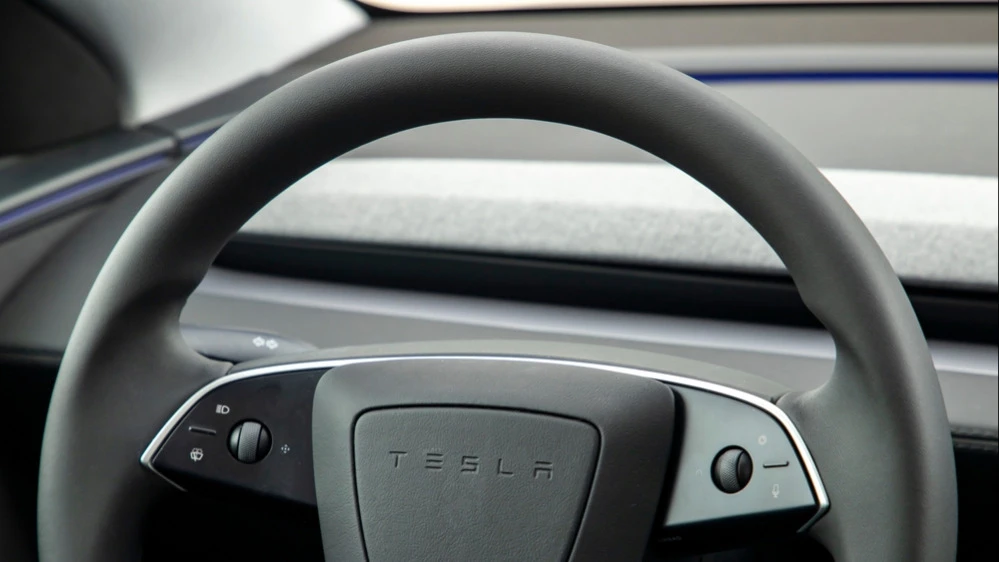Tesla profits fall short of Wall Street expectations despite record shipments
The company's share prices were down 4% in extended trading

Tesla's third-quarter revenue rose 12% and beat forecasts thanks to the elimination of tax credits for electric vehicles, which made buyers rush out. At the same time, the company's earnings fell short of Wall Street's expectations, in part because carbon revenue fell by nearly half. Tesla shares fell in extended trading by about 4% after the reports were published.
Details
Tesla's adjusted earnings in the third quarter were below analysts' expectations. It amounted to $0.5 per share, while on Wall Street, according to LSEG, predicted $0.54, writes CNBC. Net income fell by 37% - to $1.37 billion or $0.39 per share. The company attributed this result to lower prices for electric vehicles and a 50% increase in operating expenses, partly due to the development of artificial intelligence and other projects.
Meanwhile, revenue jumped 12% and significantly beat forecasts: $28.1 billion versus the consensus estimate of $26.37 billion. This is the first quarter in 2025 that revenue has shown growth: the previous two quarters were declining, Investopedia notes.
Analysts had expected strong results from the company after it reported record electric vehicle deliveries for the past quarter in early October. The surge in demand was linked to the expiring tax credits for buying electric cars in the U.S.: Americans were eager to make a discounted purchase in time. As a result, the car business brought Tesla 6% more than in the same period last year - $21.2 billion.
But the quarterly revenue from the sale of carbon credits fell sharply. It fell 44% to $417 million. A year earlier, Tesla sold $739 million worth of carbon emission engine rights to U.S. automakers. Policy changes under the Trump administration have reduced demand for these credits, Bloomberg recalls. Tesla said it expects further decline in this segment.
Tesla shares fell 4% in the post-market after the reports were released.
What else the company announced
Analysts had expected demand forecasts, CNBC emphasizes, but Tesla did not provide specific numbers in the report. Instead of plans to deliver cars and energy solutions by the end of the year, the company repeated the previous quarter's statement, warning that it was "difficult to assess" the impact of changing global trade and fiscal conditions on the auto industry, energy supply chains, Tesla's cost structure and demand. The impact of U.S. President Donald Trump's imposition of increased duties on imports was estimated by the company at more than $400 million.
Tesla indicated that it still plans to begin mass production of the Cybercab, the Semi heavy-duty electric truck and the new Megapack 3 energy storage system in 2026. The company first revealed the Semi electric tractor-trailer back in November 2017 and has since delivered it to its first customers, but production lines are still listed as "under construction." There are already a fleet of test trucks hitting U.S. roads, Tesla said during its quarter-end conference call with analysts and investors.
The report also said Tesla has started building "first-generation production lines" for its Optimus humanoid robots, a move that should give investors optimism, Barron's said .Tesla CEO Elon Musk noted during a conference call that there is no supply chain to produce the robots and the company is doing a lot of things from scratch. "We will build an Optimus production line with a capacity of one million units," he said.
Investors were waiting for specifics on the performance of the robotaxi service, which was launched in June, but the report itself did not provide such data. Musk told investors that Tesla's unmanned cars have already driven a million miles in the San Francisco Bay Area and about 250,000 miles in Austin. The company expects to launch robotaxis in eight to 10 metropolitan areas by the end of the year, subject to regulatory approvals, the businessman said. These include Nevada, Florida and Arizona. In July, he said that robotaxi service areas could cover half of the U.S. population by that time, Barron's recalls. The ten largest U.S. metropolitan areas, including New York and Los Angeles, represent only about 25% of the population.
Musk predicts that by the end of the year, most Austin neighborhoods will have no safety drivers in robotaxis, meaning the cars will be driven without an instructor in the cabin.
Context
Despite a return to revenue growth, the third quarter for Tesla was accompanied by a continued decline in sales in Europe, CNBC notes. This is partly due to negative consumer reaction to Musk's political rhetoric and competition from electric car makers such as Volkswagen and BYD, the channel explains.
Tesla shares, which fell sharply in price at the beginning of the year, are now trading in the plus side at nearly 9% in 2025. However, this is still worse than the performance of major indices and many other tech giants.
Despite record third-quarter deliveries, cumulative sales in just the first nine months of this year totaled about 1.2 million vehicles - about 6 percent less than the same period in 2024. Analysts surveyed by Bloomberg expect Tesla to report a decline in vehicle deliveries for the second straight year.
This article was AI-translated and verified by a human editor
